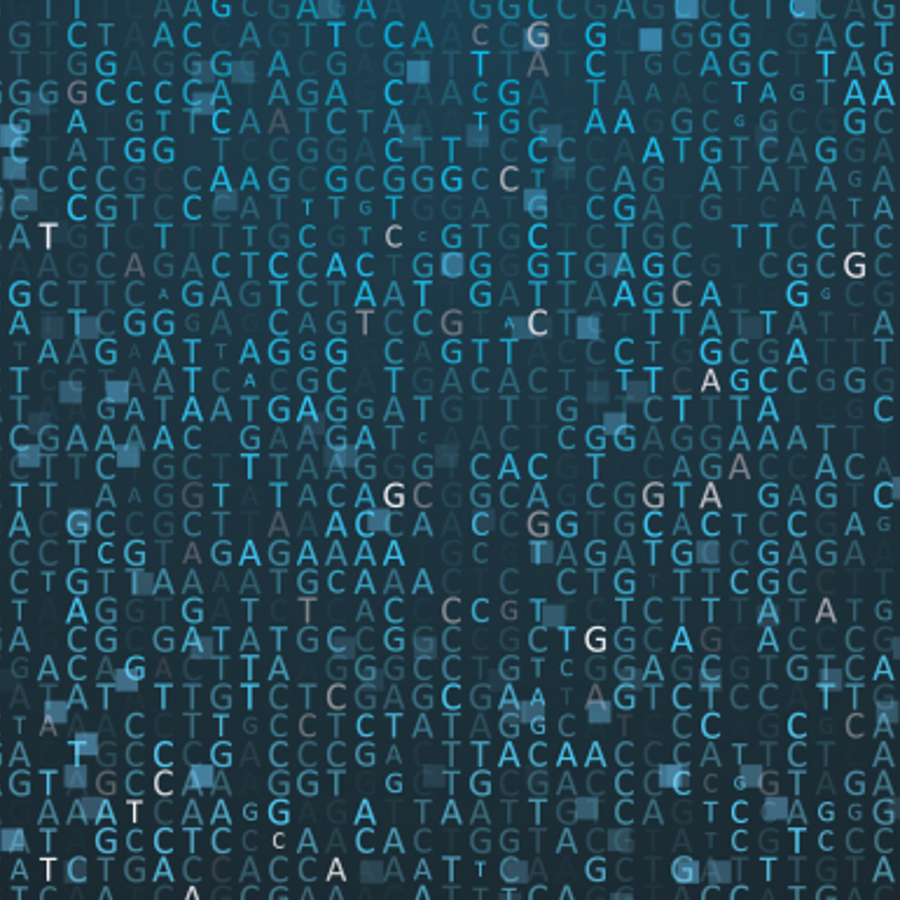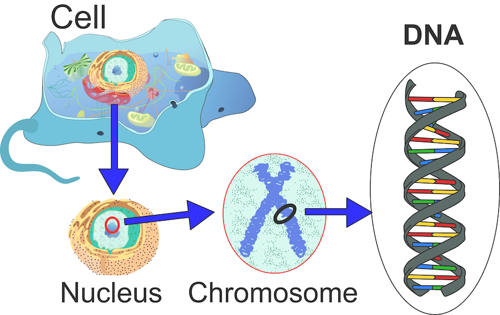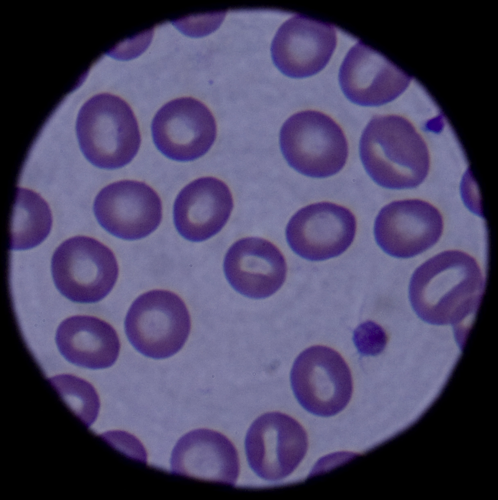
Why do some places say the human genome is 6 billion bases, while others say 3 billion?
December 13, 2017

- Related Topics:
- DNA sequencing,
- Genomics,
- Bioinformatics
A curious adult from Nevada asks:
"Why do I sometimes see 6 billion base pairs of DNA and sometimes 3 billion base pairs of DNA for the human genome?"
Your DNA has the instructions for making you. One complete set of instructions is called a genome.
These instructions are written in “letters” called base pairs. A human genome has around 3 billion base pairs.
Your body is made up of trillions of cells. Each of these cells has two copies of your genome. That’s the reason you sometimes see the 6 billion number.
You will often see the 6 billion number when someone refers to how much DNA is in a cell. And the 3 billion number when they are talking about the number of base pairs in a human genome.
Why Two Genomes?
As you may have heard, our DNA comes from our moms and dads. Half of our DNA comes from mom through her egg cell and the other half comes from dad through his sperm cell.
If you look at a cell’s worth of DNA under a microscope, we can see that DNA is actually organized into structures called chromosomes. Most people have a total of 46 chromosomes.

If you line up chromosomes by size, you can see that chromosomes pair up really nicely with another chromosome of similar size. That gives us 23 pairs of chromosomes.
In every pair, one chromosome comes from mom and the other comes from dad. So the egg and sperm cell each have one full copy of a genome!
When the egg and sperm come together at conception, the two genomes combine. This is why we ultimately have two genomes in each cell.
Sperm and Eggs Have One Genome
Are you still wondering why sperm and eggs only have one genome copy? Well, maybe it’s helpful to talk about the types of cells in the human body.
In general, there are two categories of cells. Most of the cells in our body are called somatic cells. Somatic cells have two genome copies.
Egg and sperm cells make a different category called germ cells. Germ cells start off with two genome copies. Eventually they divide into two cells with one genome copy each. This process is called meiosis.
Remember, an egg cell needs to combine with a sperm cell to eventually grow into a baby. Because one germ cell needs to combine with another to make a human, it only carries half of the genetic material found in other cells in the body!

What if Sperm and Eggs Had Two Genomes?
Let’s imagine what would happen if germ cells had two genome copies like other cells in our body.
We know that one germ cell has to combine with another germ cell to make a human. If sperm and eggs had two genome copies each, when they combine, that baby would have four genomes in each cell.
And if that generation had kids, their kids would have 8 genomes per cell. And so on. Eventually the amount of DNA would overwhelm the cell.
The body needs a way to keep the number of genomes the same with every generation. By dividing up the germ cells to have one genome each, we can make sure each person has two genomes in each cell.
Smart, huh?
Not All Cells Have Genomes!
So we know that the cells in our body have two genomes and germ cells have one genome. Every genome is housed in an area of the cell called the nucleus. But there’s more to it.
Not all of the cells in our body have copies of the genome. Red blood cells, and some cells in our skin, hair, and nails don’t have any genomes In their nuclei. These cells start off with genomes in order to develop properly, but then destroy their nuclei later on.
Human red blood cells work to transport oxygen from our lungs to the rest of our body. Red blood cells destroy their nuclei in order to carry as much oxygen as possible while staying small enough to fit through narrow blood vessels.
Some cells in the skin, hair, and nails go through a special process that also destroys their nucleus. These cells are filled with a structural protein called keratin. Keratin is a strong protein that gives hair, skin, and nails their toughness. To fit as much keratin in the cell as possible, these cells get rid of their nucleus to maximize space.

To Genome, or Not to Genome!
So that’s why you sometimes see 3 billion and sometimes 6 billion bases in your DNA. It all comes back to whether you are reading about the genome or whether you are reading about the DNA in a cell. And which cell you are reading about.
Most cells in our body have two copies of the genome with 6 billion base pairs of DNA.
Germ cells only have one copy of the genome made up of 3 billion base pairs of DNA. When sperm and egg cells combine, that results in two genomes.
Some cells like skin, hair, and nail cells don’t have any genomes. They start off with genomes in order to grow properly. But getting rid of their nuclei later on is important for the job they have in the body.

Author: Jessica Park
When this answer was published in 2017, Jessica was a student in the Stanford MS Program in Human Genetics and Genetic Counseling. Jessica wrote this answer while participating in the Stanford at The Tech program.
 Skip Navigation
Skip Navigation
